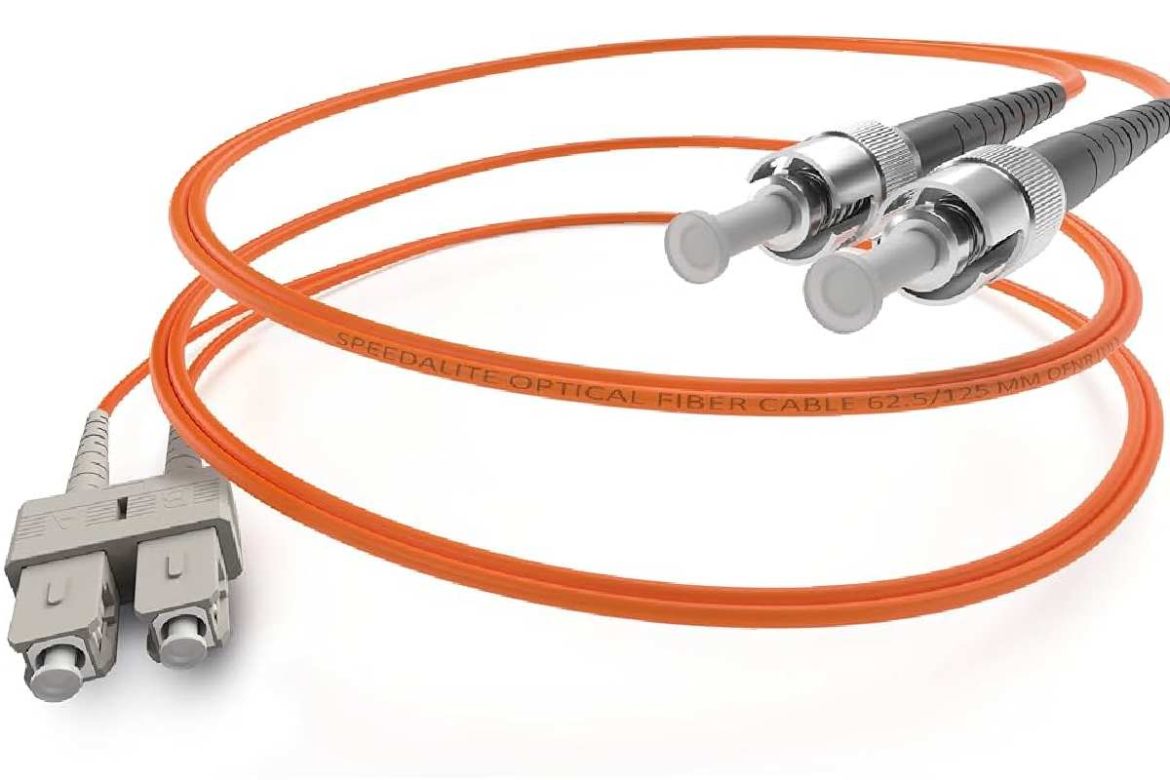For an Internet connection to work correctly, many factors come into play. We will have to have a router in good condition, that is current and does not have any failure. It is also significant to take care of wireless networks in case we connect via Wi-Fi. The devices that we use to navigate will have to have a suitable network card. They must be updated and free of threats to function as well as possible. But there is something that can sometimes go unnoticed by users: the network cable. Is it necessary to have a new cable for the optical fiber to work better?
Table of Contents
What Cable is Needed for Fiber Optics?
It may happen that a user goes from ADSL to fiber optics and finds himself in doubt as to whether the same network cable he was using is going to work now. You might even have a home setup to connect wired from other locations.
It is essential to know that the cable we use is essential for Internet speed. No matter how much maximum speed fiber optic we have, even if we have the best router on the market and the best computer, all this can be useless if we use an old or damaged cable.
Therefore we must indicate that yes, a new cable may be needed for the optical fiber to go better. Of course, it must be noted that if we have a 100 Mbps fiber optic, it could be worth old versions that are limited precisely to that speed. Now, what cable are we going to need?
Cable for Fiber Over 100 Mbps
We are going from the fact that our optical fiber is more than 100 Mbps. Why do we say this? You have to differentiate between Fast Ethernet and Gigabit Ethernet. The first technology, the one supported by older cables and older routers and network cards, only supports up to 100 Mbps. On the other hand, Gigabit Ethernet technology allows up to 1 Gbps, that is, 1000 Mbps. We need this if we have contracted fiber optics of 300 or 600 Mbps, for example.
Returning to the cable that we need for the fiber to go well, it needs to be at least category 5E. It should not be confused with category 5, which only supports 100 Mbps. Also, logically, we can opt for higher versions such as category 6 or 7. These cables allow us to reach speeds above 100 Mbps and even reach 1 Gbps.
Many users have the typical problem that they hire 300 Mbps fiber optics. For example, they do a speed test, and they do not get more than 100 Mbps. They think it may be a problem with the company, the computer, or the router. However, in many cases, it is merely the type of cable that we are using. It may well be that it is damaged or, as we have seen, an old version.
Check out: https://www.techcrunchblog.com/vga-cable-write-for-us/
Also Read: What is Edge Computing?
Cables Most Used Today
We can say that currently the most used cables, which we will find most frequently, are category 5, 5E, 6, 6a, and 7. Logically, each version is superior to the previous one, and that translates into better benefits. Of course, the price will also increase.
We have seen that category five is hardly going to help us achieve the maximum fiber optic speed (unless we have only 100 Mbps contracted). We, therefore, assume that at least we are going to need a category 5E cable.
Now, not everything is speed. That is, not everything is to connect a cable from the router to the computer from half a meter away. We may want to do a complete installation in our home too, for example, connect a computer from a very distant point. We do not want it to lose speed or be as little as possible. And yes, the type of cable also comes into play here.
If we have contracted a maximum speed connection at 1 Gbps and have several devices connected and make intensive use, we can have a 5E cable if we connect from far away. These cables are rated to deliver up to 1000 Mbps in optimal conditions, but the distance does affect.
Category 6 Cable, Ideal for Long Distances
In these cases, our advice is to use at least a category 6 cable. They are designed to achieve speeds of up to 10,000 Mbps. Okay, right now, we are not going to use that. Still, we already have a guarantee for the future, especially for that equipment that we will connect over a long distance, which can be seen as minimally affected.
From here, we can go up to category 6a or 7 cables. Both offer a higher top speed as well as a greater distance. But of course, they are more expensive. Is it worth using these types of cables? Possibly for home users, it is not necessary, and the above will suffice.
In short, the cable that we choose for our fiber optics will also mark the speed and quality of the signal. We must take this into account if, for example, we consider using an Ethernet cable that we have from an old ADSL connection.
Also Read: 5G Awaits a Definitive Step for its Launch


